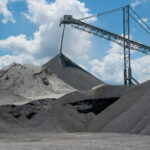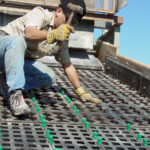
Open Area: The Basics and the Role Polydeck Products Play in Helping Your Production.
January 12, 2021
Part 2: Top Strategies to Achieve Optimal Screening Performance
January 12, 2021Control the quality of aggregate being produced by using modular synthetic media.
Most operators already know there are huge benefits to synthetic media in terms of wear life and cycle cost, as well as better maintenance efficiency due to the ease and speed of changing out worn modular panels. They’re probably also aware that the panels are easier and safer for crews to work with on a deck.
What can often escape the conversation about modular synthetic media, however, is just how tightly the operator can control the quality of aggregate being produced—and what that reliable quality means to not only the aggregate’s producer, but also the end-users.
Consistency is king!
Talk to any end-user of aggregates—such as a concrete or asphalt plant—and its virtually certain that a key factor in their success isn’t simply spec product; it’s also consistency of product.
Sure, end-users can adapt to different gradations of aggregate by adjusting their blends, but this changes their product, too. If the aggregate gradation is consistent, then so is the product being made with it. This, in turn, provides reliable and predictable performance materials for whatever the application may be.So, why do synthetic modular panels ultimately produce a more predictable pavement, bridge, or foundation?
Roller coaster or train ride?
Take wire cloth, for example. Its cut size can change rapidly during production because when wire cloth wears, it tends to break sections open and contaminate the product with oversize aggregate. Along the way to failure, wire cloth’s shallow profile also means that it’s quite common for oversize pieces to filter into the pile through worn openings, creating inconsistency issues.
Because wire cloth creates such rapid trend changes in quality control, there remains a high potential for oversize failures unless aggregate producers are extremely vigilant and change large sections of the screen deck before it fails.
The quality trends produced by modular panels are smoother and more reliable, without the same dramatic shifts up and down. This is due to the vastly improved wear rates of synthetic panel modules, and their tendency to slowly coarsen aggregate rather than “blowing open” and contaminating the product like wire cloth can do.
Such consistent reliability allows modular panel users to effectively monitor their screen media’s condition through quality control reports, instead of just relying on visual or maintenance inspection.

Custom blends
A modular panel setup also allows an operator to produce custom products with drastically more control.
For example:
An aggregate plant deploys an 8-ft. by 20-ft. wire wash screen, comprised of five 4-ft. long sections. If a customer comes to them needing a modified product, then that plant can only make changes in increments of 4-ft. runs—or just 20% of the screen’s area—at a time. Ouch!
Often, this can have too much or too little of an effect. Modular panels allow these changes to be made to the exact degree necessary, in the appropriate portion of the screen, at increments of 0.625 percent!
Ultimately, with synthetic modular panels, an operator can stop worrying about quality control and start using it to their advantage, turning customer complaints and job site fines into customer satisfaction.
Written by Alex Caruana, Aggregate Territory Manager for Polydeck.